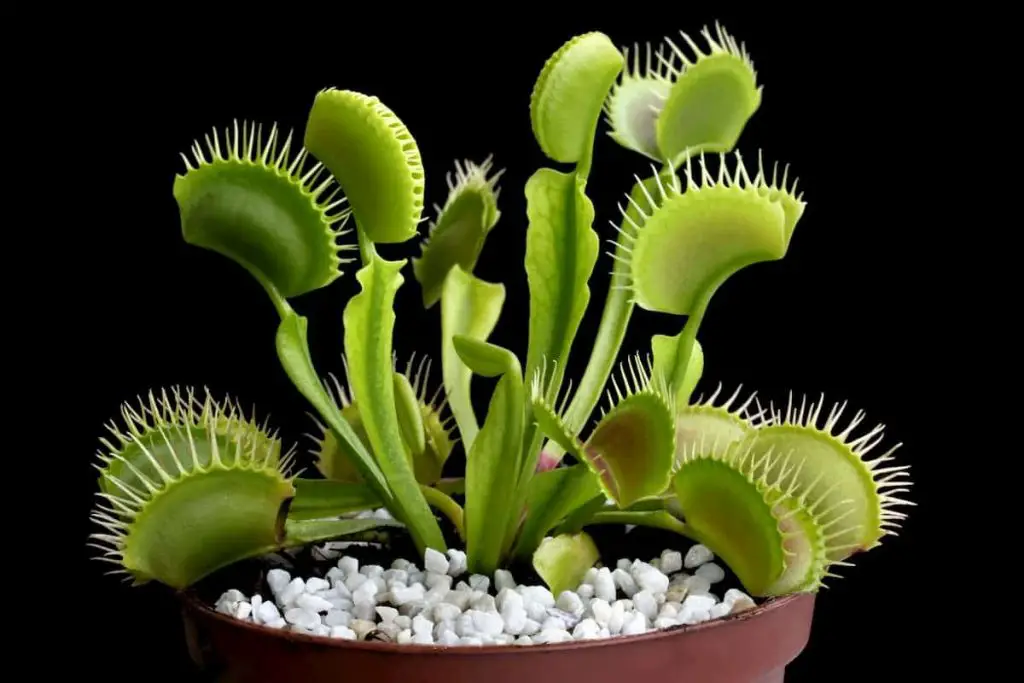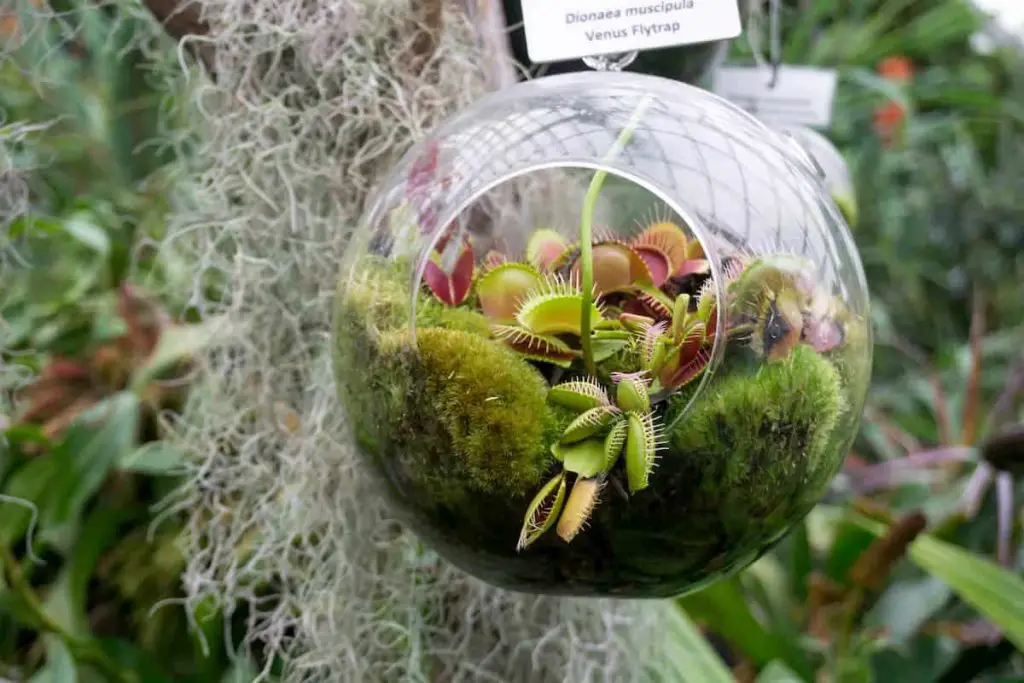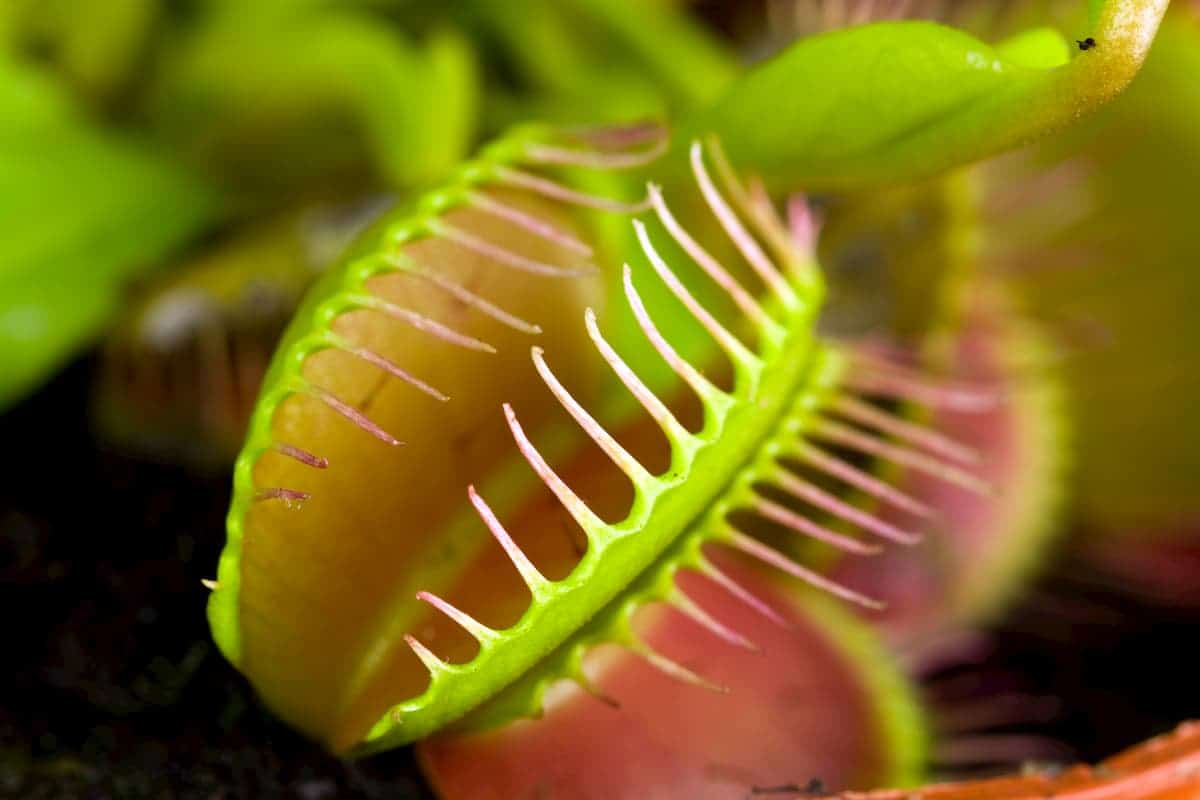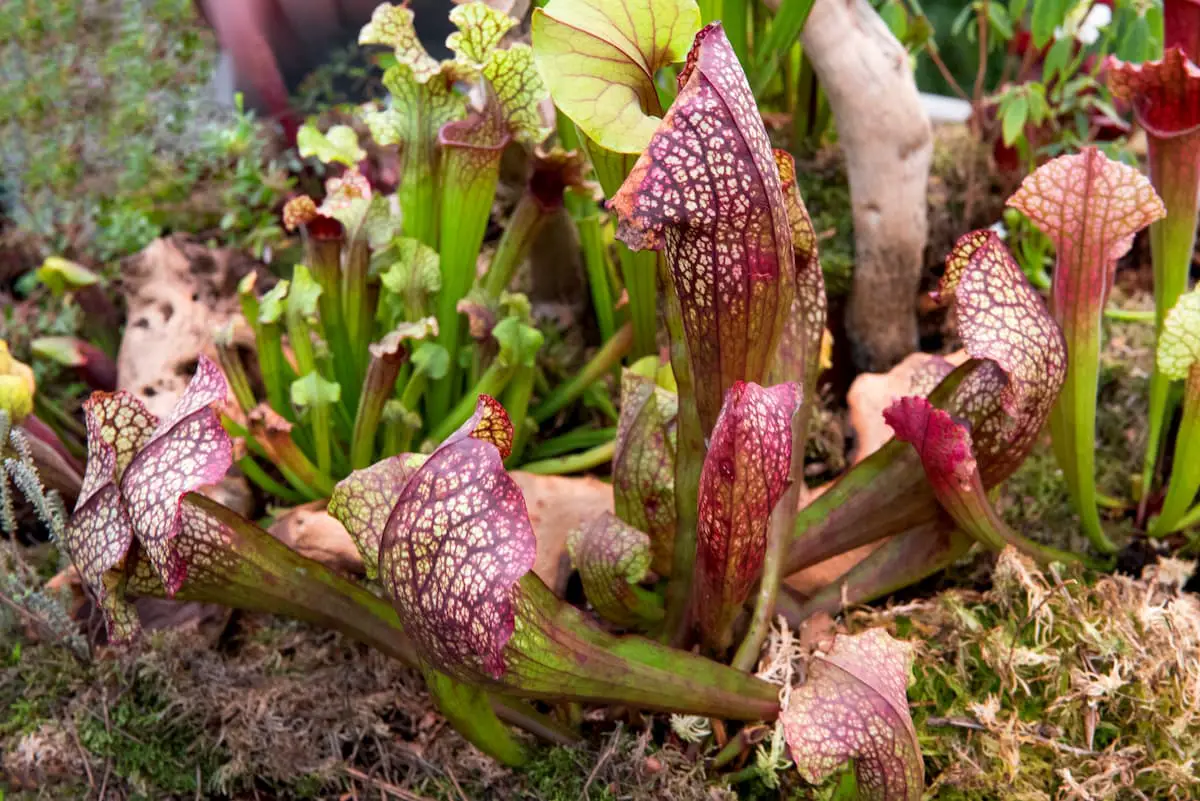This is intended to be a quick option to properly care for your Venus Flytrap and how to provide them proper care. This is not an exhaustive guide but more the main steps to a healthy and vibrant plant and how to help them grow.
Description
The leaves on a Venus Flytrap are typically open wide and they have short, stiff hairs which are called trigger or sensitive hairs. When anything comes in contact with these hairs that is enough to bend them, the two lobes on the leaves snap shut trapping whatever is inside.
The trap will snap shut in less than a second but the trap doesn’t actually close all of the way at first. It is believed that it will stay open for a few seconds which allows very small insects to escape due to the fact that they wouldn’t provide enough food for the energy needed to digest.

Originally From
The Venus Flytrap is native to select boggy areas located in North and South Carolina. Because of their distinct shape and people’s fascination with these plants, they collected many of them and they became endangered.
Watering
Like all carnivorous plants careful consideration has to be taken when you decide to care for Venus Flytraps. You need to make sure you are watering them with the correct type of water, proper amount of water and the proper overall humidity levels.
How To Water Correctly
Always keep them sitting in a saucer with a few inches of distilled or purified water, they do not want to dry out but try not to flood the top of the traps with water as they do not appreciate this.
Keep 1/2 to 1″ of water in the tray at all times. Never let it dry out.
Proper Type Of Water To Use
It is recommended to avoid using normal tap water to water your carnivorous plants and this includes the Venus Flytrap. You want to use a water with as little extra mineral content in it as possible, like rainwater, distilled water, or RO filtered water.
Be careful if buying bottled water. Most drinking water has sodium and other minerals added for taste. These can kill carnivorous plants.
Proper Humidity Level
If you live in a low humidity area in order to provide high humidity for your Venus Flytrap, plant it in a terrarium or in a glass container with a small opening. An old aquarium or fish bowl make good containers for this purpose. You need to watch your terrarium in the summer because the temperature inside the glass may get too hot. Two hours in the sun may be sufficient.

Lighting
Venus Flytraps love sun, full sun. Place it, water tray and all, in full sun for at least 4 to 6 hours per day. More is fine. Indoors or outdoors is the same: tray of water, and full sun.
It is common for some of your traps to “burn” and die back when you first put it into the sun, it is just getting used to the full sun exposure and it will quickly grow new traps.
Temperature
These are warm-temperate plants meaning that they need warm summers and chilly winters. They should be grown outdoors year-round in areas with mild winters. They can thrive in temperatures ranging from 20 degrees – 80 degrees and can even take freezes and temperatures up to 100 degrees for brief periods.
If you live in an area with very cold winters, they may be overwintered on a windowsill in an unheated room or garage.
Repotting
Next year, if it grows large (and it should if these directions are followed) it will need to be potted into a larger pot of the same peat/sand mix (2 parts peat moss, 1 part sand)
Dormancy
Flytraps will need to go into a dormant phase in the winter to continue to live and to thrive year after year. This process is essential to their longevity and health. A combination of exposure to shorter photosynthesis “sun” periods and colder temperatures from October to February triggers this dormancy.
During the period of dormancy many of your plants traps will turn black and die back, while this occurs others will grow smaller and lower to the base of the plant.
Once spring comes your plant will begin to grow vigorously again. If your night time temperatures do not drop below 20 degrees or so you should leave them outdoors for the winter. If temperatures are too cold for this, keep your plants inside and overwintered on a sunny windowsill in an unheated room or garage.
If this placement isn’t available you can bare-root the plants, wrap the roots in a little damp sphagnum moss, and place them in a plastic bag and put them in the refrigerator until spring. Please note, I haven’t personally tried this as I live in Houston and it is never 20 degrees here!
Fertilization
For carnivorous plants you never want to add plant food or fertilizer as this is not helpful to your plants longevity.
Proper Outdoor Fertilization
If grown outdoors, they will catch all of their own food. Live prey is required for the trap mechanism to work properly and to complete the digestion process. Live mealworms are a good choice. Use tweezers to feed them to your traps. MaxSea fertilizer can also be applied, once per month, to the leaves and traps of the plant. Avoid pouring through the soil.”
Proper Soil
A high quality Peat and Perlite Mix is four parts fertilizer free peat moss to one part perlite. Never pot them into regular potting soil as the nutrients and fertilizers will kill them over time.
Follow Up Reading
If you enjoyed reading about your Venus Flytrap plant and want to learn more, there is a very good book on growing Venus Flytraps, and many other carnivorous plants, Peter D’Amato’s The Savage Garden.




Leave a Reply